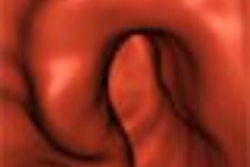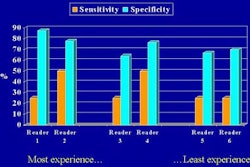CT could be a powerful tool for screening individuals at risk for lung cancer, but concerns over the cost-benefit ratio of widespread screening have held it back. Using sputum cytology to screen the screening candidates could improve detection rates and enable CT to be more efficient in detecting thoracic lesions, however.
Dear AuntMinnie Member,
CT could be a powerful tool for screening individuals at risk for lung cancer, but concerns over the cost-benefit ratio of widespread screening have held it back. Using sputum cytology to screen the screening candidates could improve detection rates and enable CT to be more efficient in detecting thoracic lesions, however.
A recent study has reinforced the value of sputum cytology as a lung screening triage tool. Canadian researchers used automated quantitative image cytometry (AQC) of sputum cells to determine whether current or former smokers received a follow-up CT screening study.
They found that all but one of the cancers they detected were in patients who had suspicious AQC findings. Using the sputum cytometry protocol reduced the number of CT scans that had to be ordered and also reduced the miss rate of CT.
Considering these findings, it's good to know that the U.S. government's National Lung Screening Trial is also collecting sputum samples, and will eventually be in a position to validate these early results in a large population-based study.
You'll find the Canadian study in our CT Digital Community, at ct.auntminnie.com. While you’re there, check out some recent articles we’ve published on using CT to diagnose appendicitis, MDCT protocols for liver imaging, and radiation dose concerns related to background radiation received by the breasts during CT exams.


















